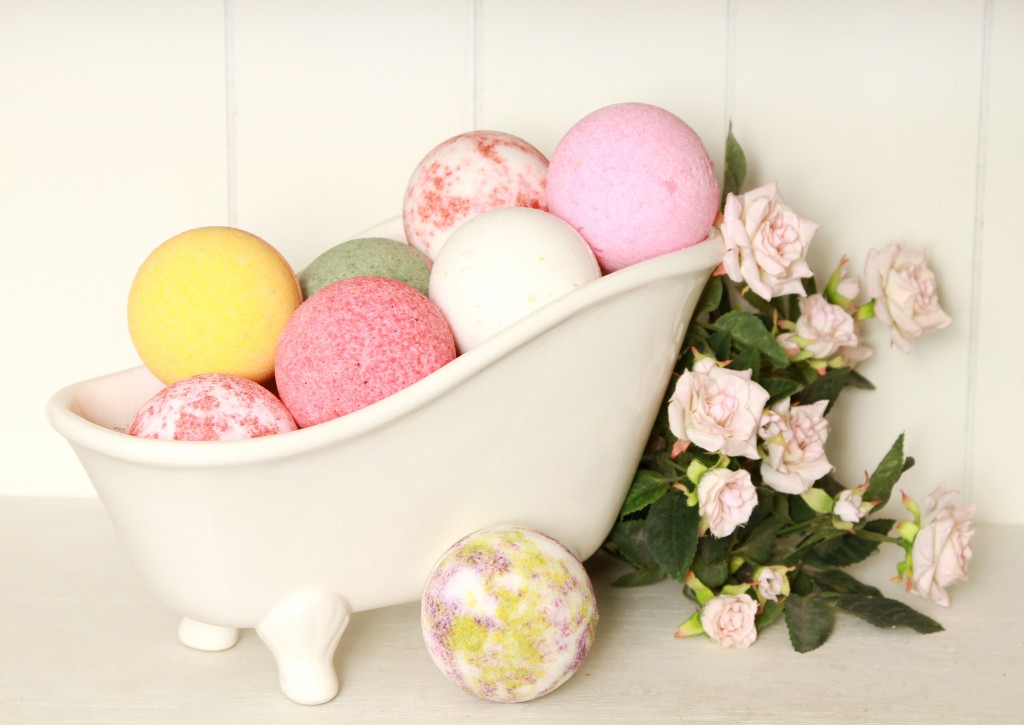After a long day of work or school, one of the best ways to de-stress and relax is a long, hot bath. You can spice it up with some candles, a glass of wine, and therapeutic music, but none of those can rival the excitement of a bath bomb. Since 2015, people have been soaked in this colorful, fragrant trend. In 2017 alone. Lush, the most popular bath bomb brand, sold 21 million handmade bath bombs.
Unlike essential oils, bath bombs carry the thrill of fizz and an explosion of colors. This moment has been captured and posted on Instagram thousands of times. Under the hashtag #bathart, people let their followers in on their bath break, showing them the swirls of hues in their tub.
So what makes bath bombs fizz and fizz, anyway?
The Chemical Reaction in Bath Bombs
There are two main agents in a bath bomb: sodium bicarbonate (also known as baking soda) and citric acid, which is found in citrus fruits. Don’t worry, the amount of each agent in a bath bomb is safe for the skin.
Sodium bicarbonate is a weak base that doesn’t react with water. Citric acid, on the other hand, is a weak acid that creates a fizzy reaction. As a base and an acid, these two neutralize one other. When they’re combined and then come in contact with water, new molecules are formed—carbon dioxide and sodium citrate salt. The fizz and the bubbles are the carbon dioxide escaping the water. The gas breaks free from the bubbles and helps distribute the colors and fragrances in the bathtub.
 Other Agents in the Bath Bomb
Other Agents in the Bath Bomb
When you buy bathroom products online, you’re not just after the aesthetic appeal. You’re looking for functionality, too. The same principles apply to bath bombs.
Once the fizz subsides, you enjoy the beautifully colored water, the soft scents, and the overall relaxing feeling of the bath. That’s why bath bombs don’t just contain fizz elements; they also have essential oils, colorants, fragrances, and other agents. Here are some of them:
- Isopropyl Alcohol – In some humid environments, the moisture in the air causes the citric acid and the sodium bicarbonate to react outside the bathtub. The water molecules in the air are enough to create carbon dioxide gases, rendering the bath bomb a dud. Isopropyl alcohol prevents this. Because it is highly volatile, it evaporates quickly and keeps the agents dry, even when surrounded by moisture-rich air.
- Binding Agent – Sodium bicarbonate and citric acid alone won’t form a dry, compact ball that can be sold in supermarkets and taken home. Potassium bitartrate, also known as cream of tartar, acts as a binding agent that keeps the entire mixture together. It hardens the ball and keeps it densely compact so that it can survive the distribution, the purchase, and the use.
- Cornstarch – In some bath bombs, cornstarch is used to control the viscosity and fizz. Cornstarch has long starch molecules that break apart in water and trap some of the water molecules. As a result, it can reduce the fizz. The less cornstarch in the bomb, the fizzier it is.
Bath bombs will remain accessible as brands create more elaborate concoctions of colors and scents. By understanding the science behind bath bombs, people will appreciate this little ball of fizz beyond its look and fragrance.



